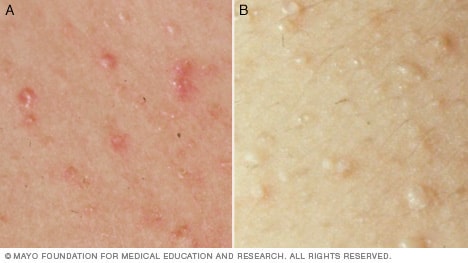

To reduce itchiness, cool, wet compresses can help, as can a soak in a cool bath with baking soda or oatmeal bath products.
Poison ivy on skin skin#
If you scratch though – and it can be very hard to resist – open skin can get infected. The blisters that form are not infected and do not normally require antibiotics. It will eventually clear up on its own, but you can try some over-the-counter and home remedies to keep the itchiness and spread of the rash at bay. It can also help to clean under your fingernails and cut your nails short to prevent the urushiol from spreading if you scratch your skin.Īllergic contact dermatitis from poison ivy almost always results in a rash that usually lasts two to three weeks before it completely goes away. Gently but thoroughly wash your skin immediately with soap and water.

But if you do happen to come into contact with poison ivy, the first step should always be to remove and wash any clothing that has touched the plant. The saying “leaves of three leave them be” highlights the best strategy to prevent poison ivy: avoidance. This rash is a type of allergic contact dermatitis – in the same family as the rashes some people get from wearing jewelry or metal belt buckles or from using certain fragrances or cosmetics. If it does, they remember having encountered this bad guy before, and their response is often faster and more powerful than the first time. Your protector cells will then sit near the skin for many years and stand guard for urushiol if it ever shows up again. Unfortunately, some of your body’s normal skin cells are casualties of this war, which is what leads to the itchiness and swelling of a poison ivy rash. The protector cells defend your body against the intruder by attacking the urushiol in the skin. These sensor cells then call in protector cells to the area, warning them of the invasion. When the oil gets into your skin, your immune system’s sensor cells recognize urushiol as foreign to your body. It can take anywhere from four hours to 10 days for the rash to appear, depending on how much urushiol gets on your skin, how sensitive you are to it and how many times you have been exposed to poison ivy previously.īetween exposure and itchy anguish, your body goes through a complex identification and reaction process. When you get “poisoned,” you won’t know right away. Whichever way it shows up, it is almost always mindbogglingly itchy. Poison ivy’s rash can come in many forms, from small, red bumps to blisters or red patches.

Another danger is smoke from burning poison ivy, which can also affect your skin, as well as your nose, mouth, windpipe and lungs if you breathe it in. If a contaminated object isn’t cleaned, the urushiol will remain lying in wait – it can still cause a rash after hours, days or even years. You can even get into trouble by touching clothing, pets or anything else that has brushed against the plant and picked up some of the urushiol. Touching poison ivy directly is obviously a bad idea. Urushiol is what gives poison oak and poison sumac their evil power, too. You can occasionally see the urushiol oil as black spots on poison ivy leaves. In fact, 85% to 90% of people are allergic to poison ivy’s urushiol to some degree, while the rest lack sensitivity to this oil. It carries an oily sap on its leaves and stems called urushiol, which is irritating to most people’s skin. Sometimes there are flowers or fruits coming off the end of a branch.ĭespite its name, poison ivy is not poisonous. You can usually spot poison ivy by its infamous three dull or glossy green leaves coming off a red stem. Climate change is turning out to benefit poison ivy, allowing for larger and more irritating plants. Its leaves, stems and berries are food for animals, and its vines can be shelter for small animals like toads and mice, even helping them climb trees.
Poison ivy on skin full#
Its favorite places are in wooded areas, gardens and roadsides with partial shade or full sunlight.Īnd despite being a nuisance to people, poison ivy is an important member of the ecosystem. Unfortunately for us humans, it is a hardy plant that can grow under many different conditions. Poison ivy is found everywhere in the continental U.S., mostly in Eastern and Midwestern states.


 0 kommentar(er)
0 kommentar(er)
